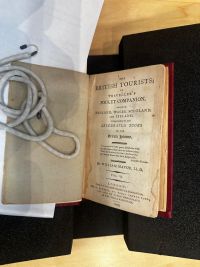A Compendium of Ancient Geography, Astronomy, and Medicine: Difference between revisions
No edit summary |
No edit summary |
||
| Line 1: | Line 1: | ||
[[File:TitlePage.jpg|thumb|Title Page|200px]] | [[File:TitlePage.jpg|thumb|Title Page|200px]] | ||
"Hic Codex Avienii" is an incunable published in Venice by Antonio de Strata of Cremona, Italy on October 25, 1488 (November 8, 1488 on Julian Calendar). This collection contains works by Avienus, including his adaptation of Aratus’s Phaenomena, alongside contributions from Germanicus Caesar, Cicero, and Serenus Sammonicus. This volume contains 122 unnumbered leaves, embellished with 38 woodcut illustrations, some of which are reused from earlier works. The text, set in a chancery quarto format, features 38 lines per page. This volume is a part of the University of Pennsylvania’s Kislak Center for Special Collections, offering a window into Renaissance intellectual culture and early printing techniques. | |||
[[woodcuts]] | [[woodcuts]] | ||
== Background == | == Background == | ||
Revision as of 21:02, 10 May 2024

"Hic Codex Avienii" is an incunable published in Venice by Antonio de Strata of Cremona, Italy on October 25, 1488 (November 8, 1488 on Julian Calendar). This collection contains works by Avienus, including his adaptation of Aratus’s Phaenomena, alongside contributions from Germanicus Caesar, Cicero, and Serenus Sammonicus. This volume contains 122 unnumbered leaves, embellished with 38 woodcut illustrations, some of which are reused from earlier works. The text, set in a chancery quarto format, features 38 lines per page. This volume is a part of the University of Pennsylvania’s Kislak Center for Special Collections, offering a window into Renaissance intellectual culture and early printing techniques. woodcuts
Background
Historical Context
This book was published in Venice, Italy...[1]
History of Incunables
Material Analysis
Substrate and Platform
Binding
Marginalia
Text
Significance
Bibliography
Notes
- ↑ Bob, A book (1906), page 3.